A bass guitar may not be as popular as an acoustic or an electric guitar, but they're the most important people on the concert stage. The lowest-pitched member of the guitar family, the bass guitar, creates the skeleton of any song.
It's a universally accepted fact that the bass guitar adds texture and character to a song, unlike any other instrument. Music genres like metallic music, rock and roll, or rock music for that matter, won't exist without bass guitarists.
However, playing a bass guitar is a challenging task. One must know the bass guitar notes on their fingertips. So, without any delay, let's get on with the ultimate guide to bass guitar notes for the aspiring Mohini Deys out there.
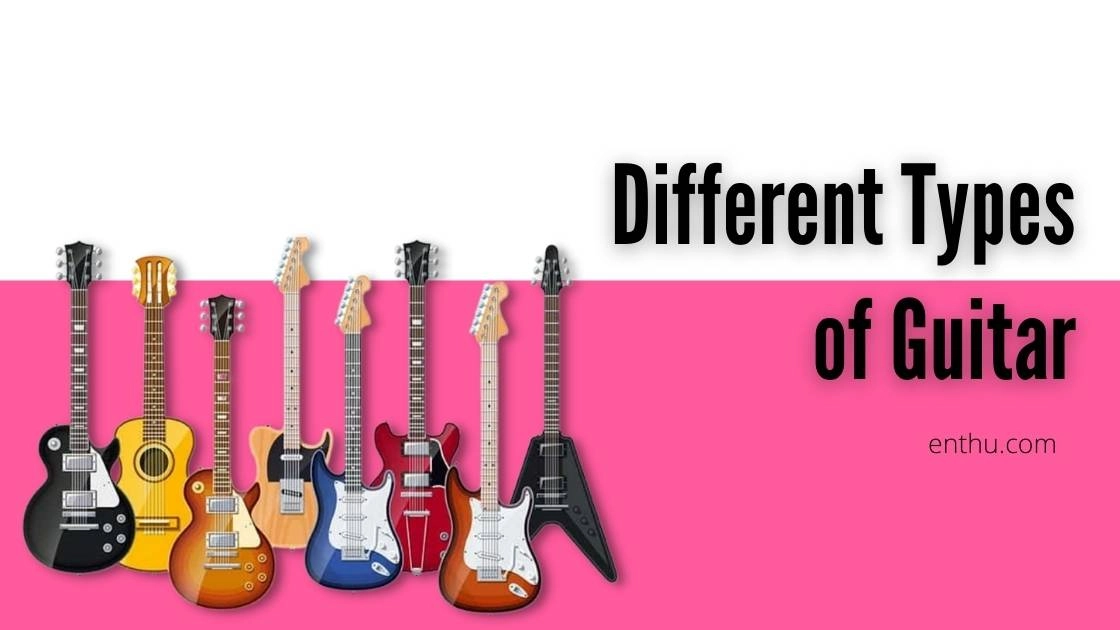
Bass Guitar Notes
All You Need to Know The first step towards learning the bass guitar notes is to learn the names of the four strings on your bass guitar. This will work as a reference when working with further complex bass lines.

So, let's start by playing the four strings without placing a finger on the fretboard. This is also known as the open position.
1. What are Open String Notes on a Bass Guitar?
E, A, D, & G are the open string notes on a bass guitar. Open string notes are the originally tuned notes on an acoustic and electric guitar. Similarly, open-string notes are the originally tuned notes on a bass guitar as well. The bass guitar notes work as a reference for any bass guitarist. So, learn them well.

The bass guitar notes are E, A, D, and G, ascending upwards while starting from the lowest string. (Remember that this tutorial is for 4-string bass guitars, not the 6-string ones.)
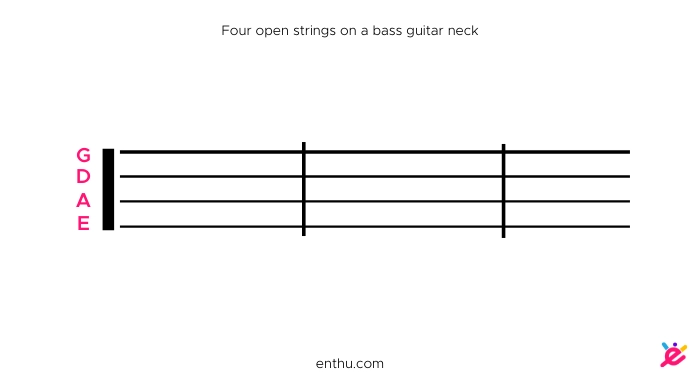
According to the Western music theory, the thickest string (4th) is tuned to the E note, the 3rd String is tuned to the A note, and the other two (2nd and 1st) are tuned to D and G notes, respectively.
This is the standard tuning for bass guitars unless specified otherwise. For instance, the famous bassist from Nirvana, Christ Novoselic, used to tune his bass guitar half step down for most of their compositions.
Natural Notes on Bass Strings
The natural notes on bass strings are A, B, C, D, E, G, & G Natural notes mean they are neither sharp nor flat. Checkout the below notation chart and find out the natural notes.
The below chart is the written representation of the neck of a bass guitar. As you read above, the E, A, D, & G are the open string notes. The numbers 1, 2, 3 up to 12 represent the frets.
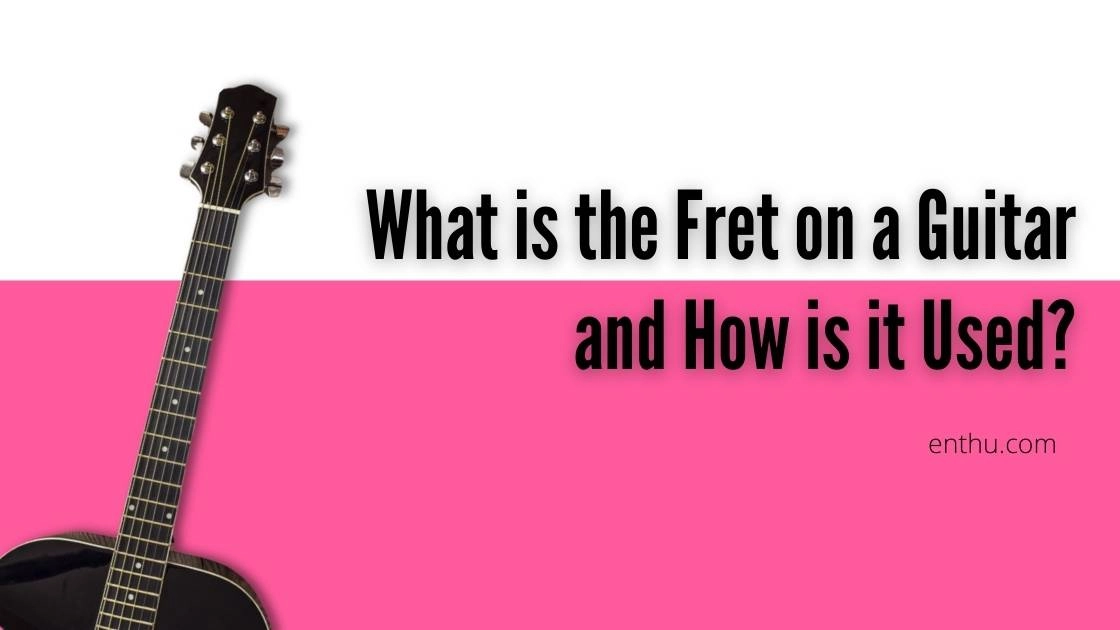
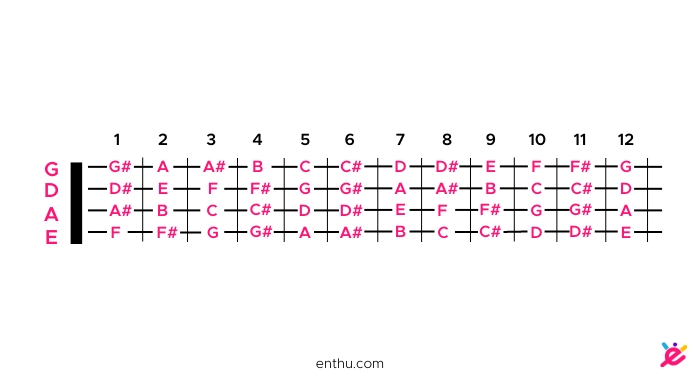
If you're learning to play a bass guitar, master the notes on 3rd and 4th strings. You will need them the most as a beginner. Before we go forward, learn the BC and EF rule.
The BC and EF RuleAll the natural notes (A, B, C, D E, F, and G) are a whole step apart, except for B-C and E-F that are half-step apart. ****Whole Step: A distance of Whole Step means two frets apart. ****Half Step: A distance of half-step means one fret apart. |
1. What are the Natural Notes on the 4th String?
Let's take a look at a simplified notation chart of the 4th string on a bass guitar.
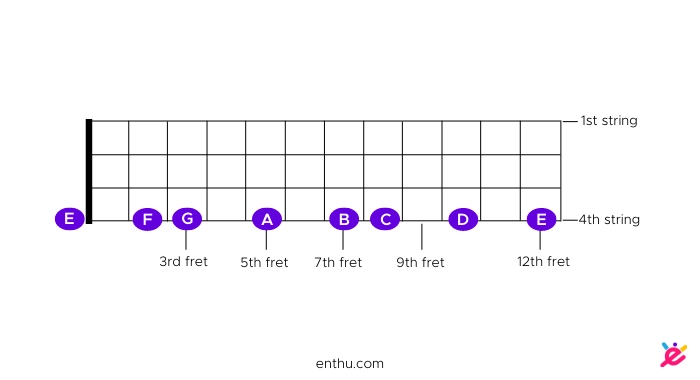
The first natural note on the 4th string is the F note and the last natural note is E. While the F note is on the 1st fret, then E note is on the 12 fret.
The natural notes on the 4th bass string are F, G, A, B, C, D, and E. Take a look at the picture to understand how the natural notes lie a whole step apart from each other, except E & F and B & C. Why is that? It's because of the BC and EF rule.
Beginning with F note, the other natural notes on the 4th String are G on the 3rd fret, A on the 5th fret, B on the 7th fret, C on the 8th fret, D on the 10th fret, and finally E note again on the 12th fret.
2. What are the Natural Notes on the 3rd String?
Here's a notation chart of the 3rd string on a bass guitar.

The first natural note on the 3rd string is the B and the last is A. The B note is on the 2nd fret, then the note A is on the 12 fret. The natural notes on the 3rd bass string are B, C, D, E, F, G, and A.
Like the natural notes on the 4th string, the 3rd string natural notes also follow the BC & EF rule. Beginning with the B note on the 2nd fret, the other natural notes on the 3rd String are C on the 3rd fret, D on the 5th fret, E on the 7th fret, F on the 8th fret, G on the 10th fret, and A on the 12th fret.
Sharp & Flat Notes on Bass Strings
After learning natural notes, it's time to learn about the sharp & flat notes on bass strings. Sharp notes are half a step up from the natural notes. These notes are identified with the # symbol on the musical sheet.
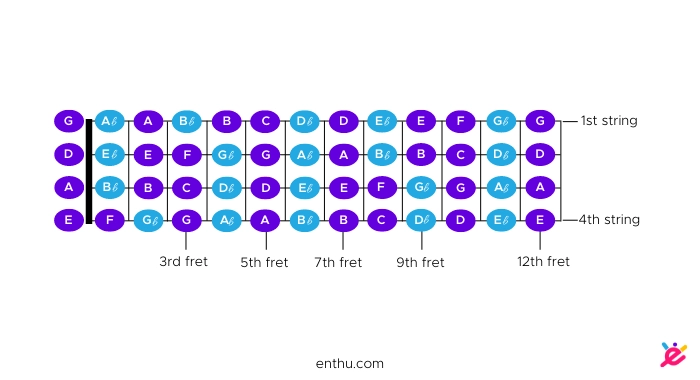
Flat notes are half a step down from the natural notes. These notes are identified with the 'b' symbol on the musical sheet. As you can see in the above picture, the 2nd fret of the E string is half step up from the F note; thus, it is F sharp (F#), and the 3rd fret of the E string is G note, making the half-step down note G flat (Gb).
1. Enharmonic Notes
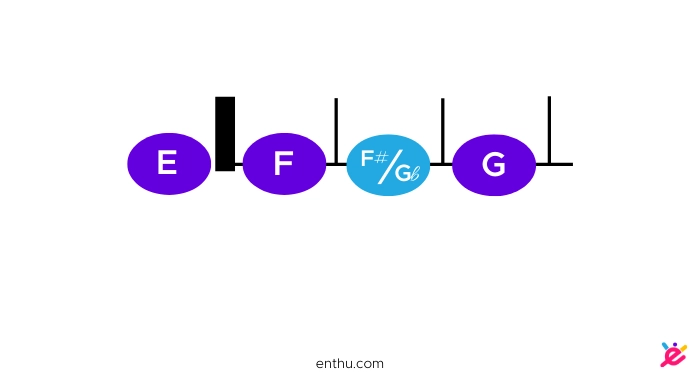
First, take a look at the notes on the bass fretboard. For instance, the 1st fret of the G string is both G# and Ab. So, this particular note serves as two different notes regarding their placement on the sheet. These notes are called enharmonic notes.
How to Remember Bass Guitar Notes?
Since the invention of the guitar, bass guitar players have come up with innovative ways to remember the notes. Like acoustic guitar players and other instrumentalists, they also have funny mnemonics and silly techniques. Let me tell you the most effective ways to remember bass guitar notes. Follow them, and you will never forget any note.
1. Use Mnemonics
To Remember Notes EADG Begin with the open string notes: EADG. If you can remember EADG notes, you're halfway done. To do that, use popular mnemonics. Some of them are given below. Pick the one you like. Eddie Ate Dynamite. Goodbye. Elvis Always Dug Good. Every Apple Dies Green Eat A Dog, God.
2. Use the Notation Chart Remember
How we learnt the periodic table at school? Yep, that's the best way to memorize anything and everything. From preschoolers learning alphabets to bass guitarists memorizing notes; it works the best.
Go above and find the notation chart in "Natural Notes" section. Print it out or draw the table, but make sure you're making several copies. Next, paste the copies in various places. You can be as silly as pasting it on the bathroom wall.
Cause, let's admit; that's where our brain works the most. Don't forget to paste copies in your practice room/studio and your bedroom. While practicing, always say the notes out loud. And, repeat them before going to bed and after getting up.
3. Learn Fret-by-Fret
The notes are a lot for a beginner. So, go fret by fret. For instance, learn the notes of fret 1, and then only go to fret 2. If you try to learn all of them at once, then it will confuse you and freak you out. Therefore, be patient with yourself.
Go one fret at a time, and you will master the bass guitar notes in no time. If you have any other technique to learn the notes, please share with us in the comment section.


Conclusion
Learning notes of the bass guitar is not one of the most exciting guitar lessons, but a primary one. If you go through the above list, you will learn the notes quickly. Dear readers, memorizing and recognizing the notes on the bass guitar might seem very simple.
However, making your fingers learn their locations so you can reach them without thinking is more difficult than one can expect. It will require hours of practice and time. Be honest with your daily practice, and you will be playing bass guitar like an expert in no time.
FAQs
1. What are the 4 notes on bass guitar?
A bass guitar comprises four strings: E, A, D, G. They are also called bass strings. The notes on bass can be found by counting the frets from the bottom of the neck to where you want your finger to go. 1 2 3 4 (E), 5 6 7 8 (A), 9 10 11 12 (D), 13 14 15 16 (G).
2. Is the bass guitar easier to learn?
It depends on your skill level and bass guitar playing style. However, if you are new to the instrument or are unfamiliar with how to play the strings, the bass maybe a better option. Bass guitars have lower action than guitars, making them easier for beginner musicians to play.
They are also less expensive and provide a more mellow tone than electric guitars. One downside of basses is that they don't generally produce as much sound volume as electric guitars do. You may need to use headphones while practicing or performing to hear the notes correctly.
Additionally, beginners often find it difficult to coordinate both hands when strumming the strings together simultaneously.
3. Can you play chords on bass?
Bass guitar chords can be tricky to play, but with a little practice, they can become second nature. The best way to start is by learning the ABCs: A, B, C#/D#, E. Once familiar with these basic chords, you can move on to more complicated arrangements such as Em or Dm7.

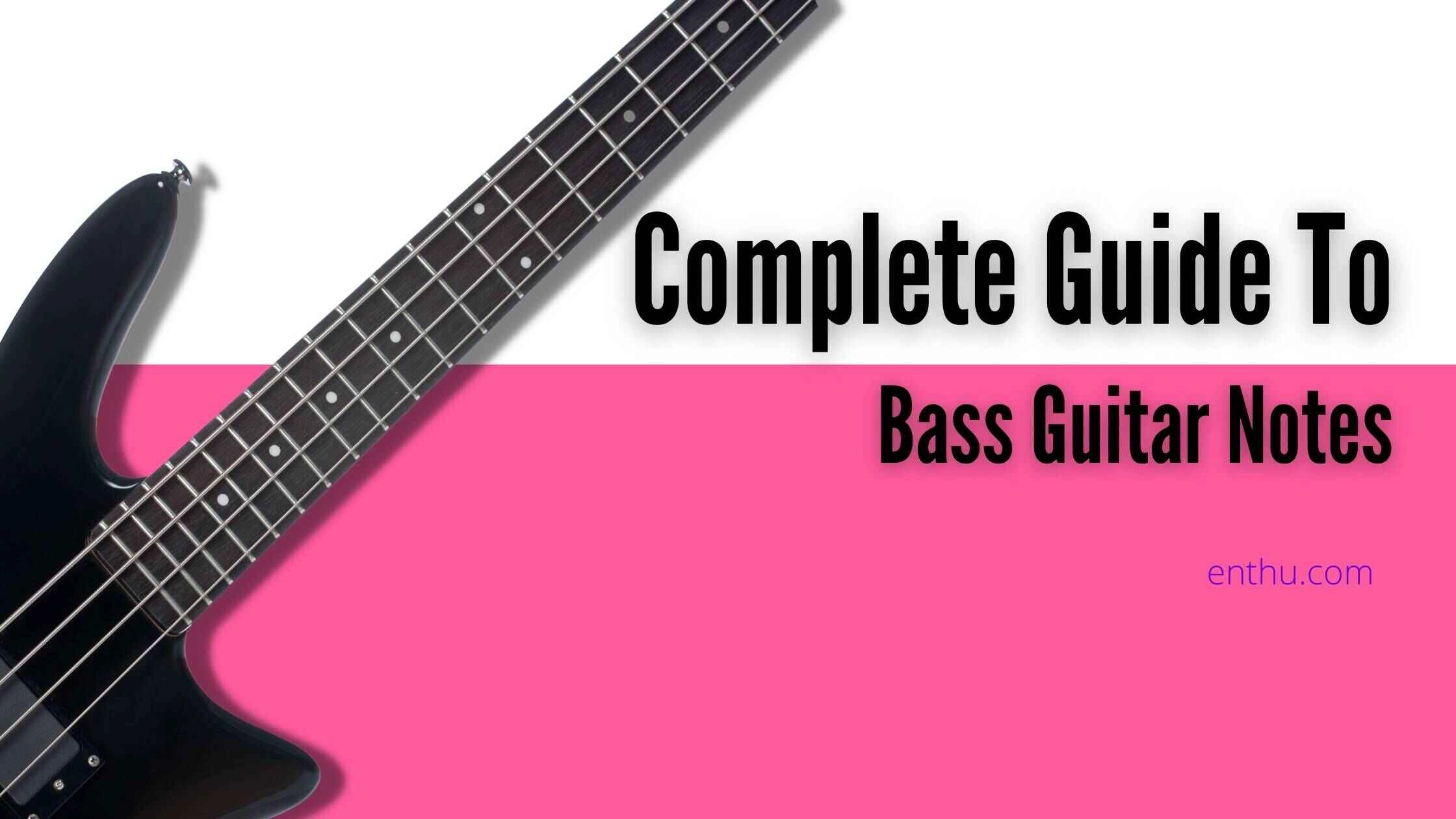
Comments